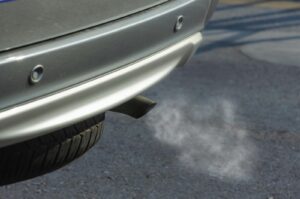Small increase in PM2.5 exposure linked to higher coronavirus death rate
Just a small increase in long-term exposure to fine particulate matter (PM2.5) leads to a large increase in coronavirus death rate, scientists at Harvard University have suggested.
In the latest study to show there is a large overlap between the causes of death of coronavirus patients and exposure to air pollution, their study found that an increase of only 1 microgram is associated with a 15% increase in the death rate.
The study says that because exposure to air pollution is known to damage the heart and lungs, it increases vulnerability to experiencing the most severe coronavirus outcomes.
The researchers obtained coronavirus death counts from every county in the United States and calculated long-term exposure to PM2.5 from 2000-2016 using a grid model. They considered variables including population density, ethnicity, BMI, percentage of smokers and what the weather was like.
However, the United States was slow to implement wide-scale testing for the virus, and the researchers said the inability to accurately quantify the number of cases due to this limited testing capacity is a potential limitation of the study.
With President Trump rolling back vehicle emission standards during the pandemic, the researchers warned that a failure to enforce existing air pollution regulations during the current crisis could potentially increase the coronavirus death toll.
Read the full study here.
The Harvard study is the second published this week to link deadly coronavirus outcomes to exposure to air pollution. A European study suggested that the higher coronavirus death rate in northern regions of Italy could be because residents have been exposed to high levels of air pollution over many years. Mortality is around 12% in the two regions while it is only approximately 4.5% in the rest of Italy, where air quality is better.
Yesterday, the Air Quality Expert Group, acting on a request from Defra, launched a call for evidence from the research and air quality communities to address the ongoing changes in UK air quality due to the coronavirus crisis.
They have asked a series of key questions that they hope will explore the interactions between air pollution and the virus, with the evidence hopefully supporting decision-making on air quality management in the coming weeks and months.
Photo Credit – Pixabay














Thomas, might be worth updating this article and headline to confirm that the increase is seen with just 1 micro gramme, not 1 g/m3. In this case the units mater very much given our limit is 25 micro-grammes.
Thanks Andy, will update. Tom.